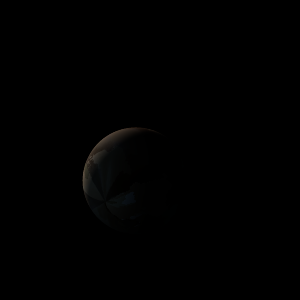|
|
Space Astro
|
Info for exoplanet "Ayagazu-ryo"
| Scientific (actual) data |
|---|
| Name | Kepler-913 b |
| Planet status | Confirmed |
| Radius | 0.184 |
| Orbital period | 10.2967 |
| Discovered | 2016 |
| Updated | 2021-02-05 |
| Tconj | 2454970 |
| Publication | Announced on a website |
| Detection type | Primary Transit |
| Alternate names | 2MASS J19501994+4157087 b, K01627.01, KIC 6543893 b, KOI-1627 b, KOI-1627.01, WISE J195020.06+415708.5 b |
| Star name | Kepler-913 |
| Right ascension | 297.58° |
| Declination | 41.95° |
| Mag v | 15.52 |
| Mag j | 14.361 |
| Mag h | 13.523 |
| Mag k | 13.477 |
| Star distance | 991.618 |
| Star metallicity | -0.52 |
| Star mass | 0.95 |
| Star radius | 0.814 |
| Star sp type | G6V |
| Star age | 5.62 |
| Star temperature | 5440 |
| Star alternate names | 2MASS J19501994+4157087, KIC 6543893, KOI-1627, WISE J195020.06+415708.5 |
| Wikipedia article | Kepler-913 b |
Back
| |
| Fictional info (?) |
|---|
| Suggested name | Ayagazu-ryo |
| Planet type | Cold planet |
| It is the coldest planetary atmosphere in its solar system, with a minimum temperature of 45°K (-228°C), and has a complex, layered cloud structure with nitrogen thought to make up the lowest clouds, and formaldehyde the uppermost layer of clouds.
The polar regions are constantly below 216°K (-57°C). |
| Atmosphere | Formaldehyde | 76% |
| Nitrogen | 13% |
| Ammonia | 9% |
| Helium | 1.2% |
| Nitric oxide | 0.00016% |
| Atmospheric pressure | 31 bar |
 |
| No known satellites |
| Google search for Ayagazu-ryo |
|
Website by Joachim Michaelis
|
|
|
|